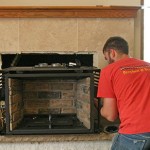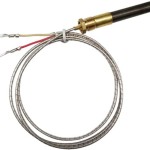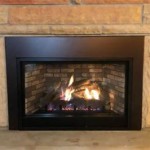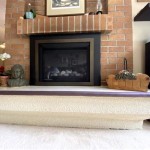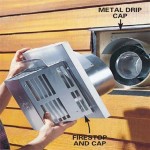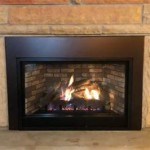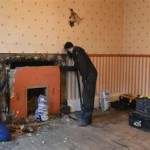Outdoor Fireplace Ideas for Enhancing Your Outdoor Living Space
An outdoor fireplace can significantly elevate an outdoor living area, providing warmth, ambiance, and a focal point for gatherings. The design and construction of an outdoor fireplace require careful consideration, factoring in elements such as available space, budget, aesthetic preferences, and local building codes. This article explores various outdoor fireplace ideas to inspire and inform those considering adding this feature to their property.
Choosing the Right Location and Fuel Type
Selecting the appropriate location for an outdoor fireplace is paramount. It is essential to consider factors such as prevailing winds, proximity to structures, and potential obstructions. Local building codes often dictate minimum distances from property lines, buildings, and vegetation. A location that minimizes smoke intrusion into neighboring properties or the main house is crucial. Additionally, accessibility for fuel storage and maintenance should be considered. A level surface is ideal, simplifying construction and ensuring stability.
The choice of fuel type will influence the design and functionality of the fireplace. Wood-burning fireplaces offer a classic aesthetic and the satisfying crackling sound of a natural fire. However, they require a dedicated fuel supply and regular cleaning. Gas fireplaces, fueled by natural gas or propane, offer convenience and ease of use. They can be ignited with the push of a button and provide consistent heat output. Electric fireplaces are another option, requiring only an electrical outlet and offering ease of installation and maintenance. Each fuel type presents unique advantages and disadvantages regarding cost, maintenance, and environmental impact. It is necessary to research and evaluate these factors thoroughly before making a decision.
Furthermore, consideration must be given to the fireplace's orientation regarding prevailing views and established outdoor living spaces. A fireplace positioned to capitalize on scenic views or to complement an existing patio or deck seamlessly integrates the structure into the overall landscape design. Proper planning in this regard ensures that the fireplace enhances, not detracts from, the outdoor environment.
Design Styles and Material Options
The design of an outdoor fireplace should complement the architectural style of the home and the overall landscape design. A wide range of design styles are available, from rustic and traditional to modern and contemporary. Rustic fireplaces often incorporate natural materials such as stone and reclaimed wood, emphasizing a natural, earthy aesthetic. Traditional fireplaces may feature brick or manufactured stone with classic details such as mantels and hearths. Modern fireplaces typically employ clean lines, geometric shapes, and materials such as concrete, metal, and glass.
The choice of materials significantly impacts the appearance, durability, and cost of the fireplace. Natural stone, such as fieldstone, river rock, or granite, provides a durable and visually appealing option that blends seamlessly with the natural environment. Brick offers a classic and timeless look and can be used in various patterns and colors. Manufactured stone, a concrete-based product designed to mimic the appearance of natural stone, provides a more affordable alternative with a wide range of styles and textures. Concrete offers versatility in design, allowing for custom shapes and finishes. Metal, particularly stainless steel, can be used to create sleek and modern fireplaces.
Beyond the primary materials, consider incorporating accents and decorative elements. A mantel can provide a focal point for displaying decorative items or holding drinks. A hearth extends the fireplace and provides a seating area or a place to rest firewood. Built-in storage for firewood or accessories can add functionality and organization. The selection of appropriate materials and decorative elements allows for the creation of a fireplace that is not only functional but also aesthetically pleasing and reflective of individual tastes.
Integrating the fireplace into the surrounding landscape is also a key consideration. Consider incorporating landscaping elements such as plants, shrubs, and trees to soften the edges of the fireplace and create a more natural and cohesive look. Low-growing plants can be used to define the fireplace area, while taller plants can provide privacy and screen unsightly views. Strategic lighting can enhance the ambiance of the fireplace at night, creating a warm and inviting atmosphere.
Understanding Construction Considerations and Safety
The construction of an outdoor fireplace requires careful planning and adherence to local building codes and safety regulations. Depending on the complexity of the design, it may be necessary to hire a qualified contractor or mason to ensure proper construction and safety. A solid foundation is essential to prevent settling and cracking. The fireplace should be constructed with fire-resistant materials and designed to withstand high temperatures. A proper chimney or flue is necessary to vent smoke and gases safely.
For wood-burning fireplaces, a spark arrestor is essential to prevent embers from escaping and potentially causing a fire. The area around the fireplace should be cleared of flammable materials, such as dry leaves and branches. It is also crucial to have a fire extinguisher or water source readily available in case of an emergency. Regular maintenance, such as cleaning the chimney and inspecting the firebox for cracks, is vital to ensuring the safe operation of the fireplace.
For gas fireplaces, proper gas line installation and venting are critical. A qualified gas professional should handle the installation to ensure that it meets all safety standards. Regular inspections of the gas line and connections are necessary to detect and prevent leaks. Carbon monoxide detectors should be installed nearby to provide early warning of a potential carbon monoxide buildup. Proper ventilation is essential to prevent the accumulation of carbon monoxide, which is a colorless and odorless gas that can be deadly.
Furthermore, consider the impact of the fireplace on the surrounding environment. Avoid locating the fireplace near trees or other vegetation that could be damaged by the heat. Be mindful of smoke emissions and their potential impact on air quality. Consider using alternative fuel options, such as propane or natural gas, which produce less smoke than wood. Responsible fireplace use minimizes environmental impact and ensures a safe and enjoyable experience for all.
In summary, creating an outdoor fireplace involves multiple facets. It is important to consider location, fuel type, design, construction, and safety regulations to create a functional and visually appealing outdoor fireplace that enhances the overall outdoor living experience. Careful planning and attention to detail ensure a safe and enjoyable addition to any property.

30 Outdoor Fireplace Ideas Cozy Fireplaces

53 Most Amazing Outdoor Fireplace Designs Ever

Outdoor Fireplace Design Ideas Getting Cozy With 10 Designs Unilock

Outdoor Fireplace Ideas The Home Depot
:max_bytes(150000):strip_icc()/bring-holidays-outside-x-50f80e4865984b36b603a1de82d2938b.jpg?strip=all)
Glowing Outdoor Fireplace Ideas

Five Fabulous Outdoor Fireplace Ideas Coogans Landscape Design

Outdoor Fireplace Ideas S

Outdoor Fireplace Design Secrets From An Expert

Outdoor Fireplace Design Ideas

25 Outdoor Fireplace Ideas Fireplaces Fire Pits
Related Posts

